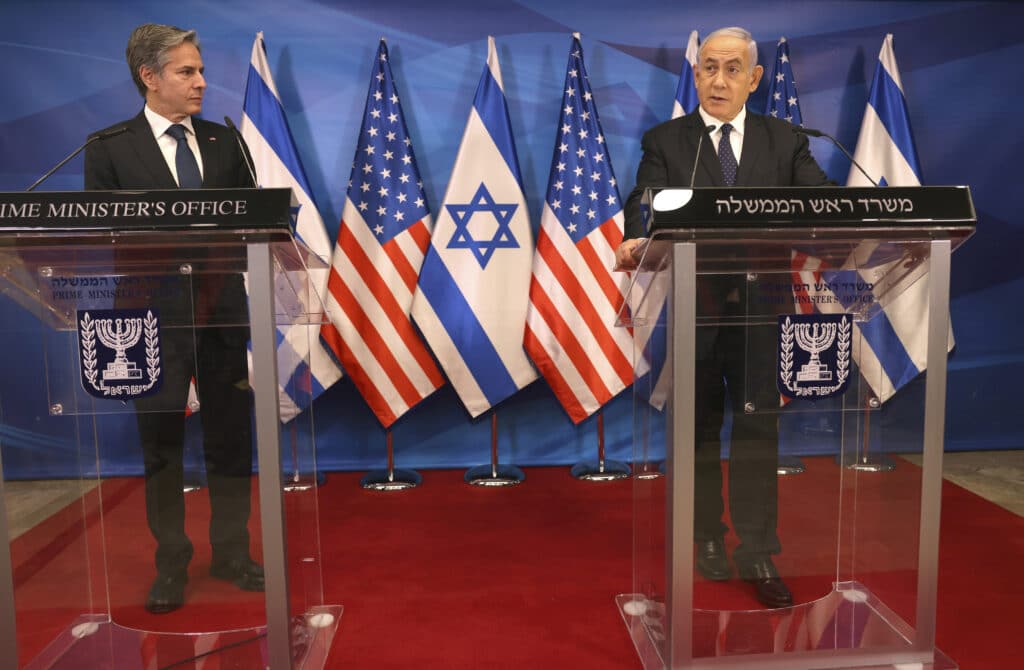Death of 2-State Solution at the Hands of a 3-State Situation
The two -state solution is the best option for the Israelis and the Palestinians alike. It would create an independent Palestinian state and avoid turning Israel into an apartheid state. But the idea that has been guiding all peace efforts since the Oslo Accords may not be possible now. A three-state situation has emerged from the rubbles of the recent 11 -day war between Israel and Hamas in Gaza. There are two impediments to the two-state solution: Netanyahu and Hamas.
Netanyahu’s One State
Although Benyamin Netanyahu at times accepted the proposal of a two-state solution the longest serving Israeli Prime Minister has pursued policies that would make him the champion of a one state solution. Marwan Muasher, the former Jordanian Foreign Minister recently said that the one-state solution is currently in existence for all practical purposes. Jordan is one of the two original states that signed peace treaties with Israel. The other state, Egypt, concluded its peace treaty with Israel under a Likud-led government. So, the notion that the Likud itself is the impediment to giving up land for peace is problematic. Former Israeli Prime Minister, Ariel Sharon, who was from the Likud Party gave up Gaza, although very severe controls are still being imposed by Israel not only on Gaza but also on the West Bank. But it is Mr. Netanyahu, who seeks to expand settlements on land claimed by the Palestinians as a part of their future state. In 2000, in the final month of Bill Clinton’s presidency, a Labor-led Israeli government accepted, with reservations, Clinton’s proposals to establish a Palestinian state on 97% of the West Bank at the time. Both Likud and Labor have historically acknowledged in action and words, that Israel’s historical and religious claims and attachments to that portion of land do not translate into the expansive land grab that Mr. Netanyahu is pursuing. If King David was the founder of Jerusalem, a fact implicitly acknowledged by the Quran, the Jerusalem we are talking about was a tiny, primitive village. Again, the West Bank, claimed by Mr. Netanyahu as his ancestral land, was in fact a less than a mile of distance between Ramallah and Jerusalem. Today, more than 474,000 Jewish settlers live in the West Bank, and more than 200,000 settlers live in East Jerusalem, according to U.S. and Israeli government data. Israel captured the West Bank and East Jerusalem in the 1967 war. As recently as last year, Mr. Netanyahu had plans to annex large swaths of the West Bank. He eventually backed off as a result of the defeat of Donald Trump in 2020 presidential election. But he continued to pursue policies squeezing the land and controls available for the Palestinians. Let us remember that the recent Gaza war had its roots in East Jerusalem and Israel’s expansive policies and controls beyond what King David ever dreamed of. And let us also remember that the future of the two -state solution is dependent, to a large degree, on who occupies the White House.
Hamas, a third state
Even if President Biden succeeds in negotiating a two-state solution the emerging Palestinian state would be that of the Palestinian Authority, which would not be viable because Hamas, in Gaza, would still be able to fire rockets on Israeli targets. Hamas, which rules in Gaza, does not acknowledge Israel’s right to exist. Mr. Biden declared that peace would not be possible under such circumstances. There is one other factor to consider: The recent 11-day conflict between Israel and Hamas in Gaza, has marginalized the Palestinian Authority as the legitimate representative of the Palestinian people. If legislative and presidential elections were to be held today the Palestinian Authority would almost certainly lose to Hamas. Mr. Biden, and Israel too, face a real dilemma they need to deal with. While Hamas may be a terrorist group it is also an essential player in any two-state solution. And if an independent Palestinian state would be established on the West Bank only, excluding Gaza, Hamas would still be able to launch Iranian-supplied rockets on Israel. Yes, Israel can re-occupy Gaza. But such a scenario would mean the two -state solution is not a viable solution. Hamas is relying on an important fact: While it can withstand thousands of casualties and much destruction, as we have witnessed in the recent conflict, Israel would be brought down to its knees with a much smaller death toll among its own citizens. Israel’s 100 nuclear heads and its military superpower status in the region would be of no help. Perhaps the best first step for the Biden administration, and for Israel, is to use the humanitarian and reconstruction aid for Gaza as a tool to establish meaningful, yet indirect, contacts with Hamas. Such contacts should be supplemented by diplomatic efforts with countries having an influence on Hamas, such as Qatar, Iran and Turkey. Hamas should also be included in a joint delegation negotiating peace with Israel. After all, Yasser Arafat had for a long time been labeled as a terrorist by the U.S. And the U.S. is negotiating with Taliban when a faction of the group is on the U.S. terrorist list. The idea is to see if there is a way to turn a 3-state situation into a 2-state solution. Read More By The Author
Disclaimer: The views and opinions expressed in this article are those of the authors and do not necessarily reflect the official policy or position of Newslooks.com







